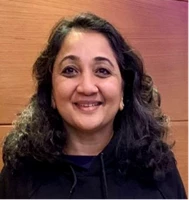
“The communities that are the intended beneficiaries of projects are too poor to contribute.”
It is common to hear this sentiment expressed both among task teams, but also clients, when referring to development projects that require community contribution. However, evidence shows that community contribution is important to not only ensure ownership and commitment from the people supported by the project but also sustainability of the investments.
The practice of community contribution is prevalent across all projects in Ethiopia which the Development Response to Displacement Impacts Project in the Horn of Africa (DRDIP) has also adopted. The DRDIP is a regional program under implementation in the Horn of Africa covering Djibouti, Kenya, Uganda and Ethiopia. It seeks to mitigate the social, economic and environmental impacts of protracted presence of refugees on host communities. Improving access to basic social services and economic infrastructure, including education, health, water facilities, and access road is an important objective of the project.
From our interaction with communities under the DRDIP, we wanted to better understand their motivation behind their contributions. Was it because it was a requirement, or did communities actually believe in it? And if so, what were their motivations?
During our recent visit to DRDIP project site in Tahtay Adiabo woreda in the Tigray region, as part our Implementation Support Mission, we saw piles of stone and sand near sites where an infrastructure investment had been prioritized by the community. Community members informed us that implementation was imminent, as designs were being finalized, and there was evidence that communities have already contributed both in -kind (labor and local material e.g., sand, stone etc.) and cash.
The Tahtay Adiabo woreda is one of the poorest and most underserved areas, with significant poverty levels. During our interaction with Kebele Development Committee (KDC) and the beneficiary community at large, we inquired about the community contribution. In an instant, almost every member present whipped out their receipts which had recorded their cash contributions. The KDC proceeded to present us with the records reflecting the total amount of cash contributions collected, and the total amount of materials contributed both in terms of quantity and its value. They proudly proclaimed that they had reached 100% in their cash and kind contributions, and were looking forward to the construction of the primary school starting soon.

We, along with the federal and regional project coordination units, had a detailed discussion to understand key lessons emerging from DRDIP’s experience of community contribution. Key among them are:
- Communities contribute only when the sub-project being implemented is of their choice and/or priority and they truly want it.
- Communities need to know clearly what is the design of the infrastructure, how much does it cost, how will it be implemented, and how their cash and material contribution is accounted for.
- The contribution across community members is not uniform, and is dependent upon their ability to contribute. It is not how much they contribute, but whether they contribute. Very poor families are not expected to contribute.
- The clear accounting of this contribution is critical – a transparent process of recording and proper receipts to communities.
- The funds are deposited in the woreda project account providing for the safety of their contribution.
- The site and specification for collection of construction material, and the quality of the material contribution is certified by the engineer to ensure quality of construction.
- The Social Audit committee oversees the process and a functional grievance redress mechanism allows for registration of complaints.



Join the Conversation